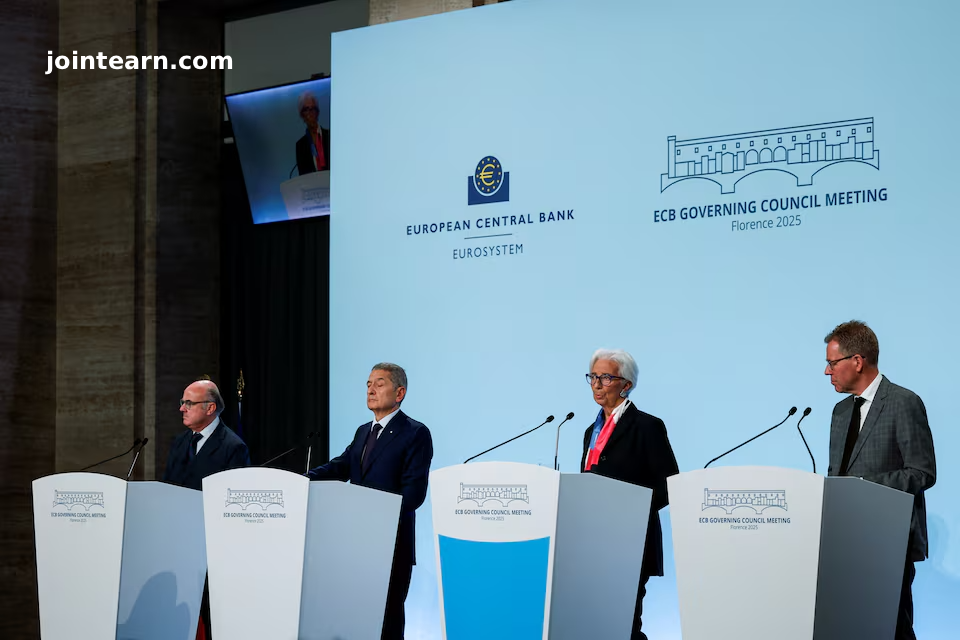
European Central Bank Maintains Policy Amid Solid Growth and Low Inflation
FLORENCE, Italy — October 30, 2025:
The European Central Bank (ECB) has opted to keep interest rates unchanged at 2% for the third consecutive meeting, signaling confidence in the eurozone’s economic resilience despite ongoing global trade tensions and geopolitical uncertainties.
At a press conference following the ECB’s monthly policy meeting, ECB President Christine Lagarde emphasized that the Governing Council will continue to monitor incoming economic data before committing to any particular policy path, keeping all options — including potential rate cuts — on the table.
“The Governing Council’s assessment of the inflation outlook is broadly unchanged,” the ECB said in a statement. “The robust labour market, solid private sector balance sheets, and past interest rate cuts remain important sources of resilience.”
Economy Performing Better Than Expected
Recent economic data suggest that the eurozone is holding up better than analysts predicted. Gross domestic product (GDP) grew by 0.2% in the third quarter, exceeding the ECB’s forecast of stagnation and a 0.1% consensus estimate. Strong performances in Spain and France contributed to the positive surprise.
Additional indicators, including Purchasing Managers’ Index (PMI) surveys, point to improving business sentiment, particularly in Germany, the bloc’s largest economy. Companies are showing renewed optimism, partially due to a gradual easing of uncertainty over tariffs.
Trade Tensions and Chinese Market Impact
Despite these positive signs, risks remain. Ongoing U.S. tariffs, European exposure to Chinese trade diversion, and weak export performance are keeping policymakers cautious. China has reportedly been redirecting goods it cannot sell in the U.S. to European markets, adding pressure to local industry.
The strong euro, which can limit inflation, has stabilized in recent weeks, but ECB officials continue to monitor currency movements and their impact on economic growth. ECB Chief Economist Philip Lane highlighted that temporary undershooting of the inflation target could justify a slightly lower rate if conditions worsen.
Market Expectations and Policy Outlook
Financial markets are currently pricing in a 40–50% chance of a single ECB rate cut by June 2026, reflecting ongoing uncertainty. However, the majority of economists expect rates to remain steady in the near term, given strong household savings, increased government spending in Germany, and gradual normalization of trade conditions.
The ECB will release updated projections in December, including initial estimates for 2028, which may determine whether further monetary easing is needed.
Conclusion
By holding rates at 2%, the ECB is balancing support for steady economic growth with the need to maintain inflation near target, navigating a complex landscape of trade tensions, currency fluctuations, and global uncertainties. The eurozone’s ability to sustain growth amid these challenges will remain under scrutiny in the coming months.


Leave a Reply